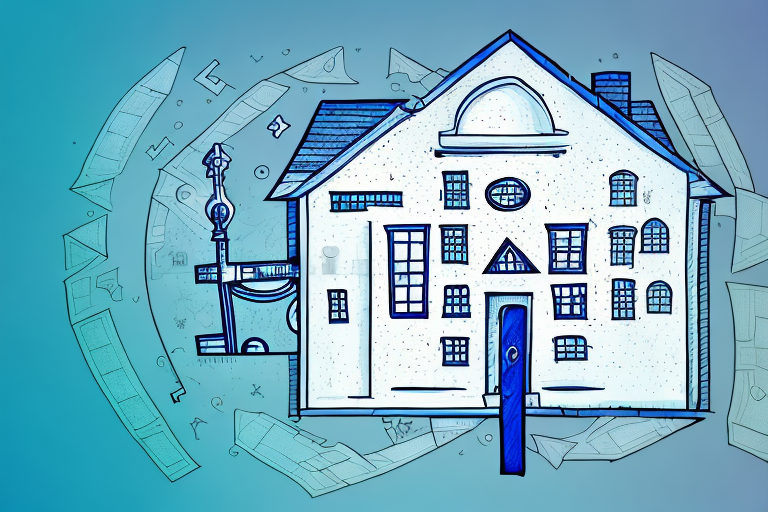Buying a home or investing in property can be a daunting task, especially if you’re a first-time home buyer or inexperienced property investor. With any investment comes risk, and mitigating those risks should be a top priority. This article will guide you through the key steps in risk assessment for both first-time home buyers and property investors, helping you make informed decisions and avoid costly mistakes.
Understanding Risk Assessment in Real Estate
Before you can delve into risk assessment, it’s important to understand what it is and why it matters. Risk assessment involves identifying potential risks and evaluating their likelihood of occurrence and potential impact. In real estate, these risks can include market fluctuations, changing economic conditions, property-specific risks, and legal and regulatory issues.
Why Risk Assessment Matters for First Time Home Buyers
Buying a home is likely to be the most significant financial decision you’ll ever make. As a first-time homebuyer, understanding the risks associated with your purchase is crucial. Without proper risk assessment, you may end up with a property that needs costly repairs, has legal disputes or is unsustainable in the long term.
For instance, you may fall in love with a home that is located in a flood-prone area. Without proper risk assessment, you may fail to realize the potential damage that could be caused by floods, leading to costly repairs and a loss of property value.
Another example of the importance of risk assessment for first-time home buyers is the potential for hidden defects in the property. Without proper inspection and evaluation, you may end up with a home that has significant structural issues or other problems that can be costly to repair.
The Importance of Risk Assessment for Property Investors
When it comes to property investment, risk assessment is essential to maximizing your ROI. Failing to conduct adequate due diligence can result in a poor performing investment, one that may not yield any returns or potentially turn into a financial loss.
For example, if you’re considering investing in a rental property, it’s essential to evaluate the potential for vacancies and the rental market trends in the area. Without proper risk assessment, you may end up with a property that sits vacant for extended periods, resulting in a loss of income and increased expenses.
Another example of the importance of risk assessment for property investors is the potential for unforeseen expenses. Without proper evaluation, you may fail to realize the potential for costly repairs or maintenance issues, leading to financial losses and reduced ROI.
In conclusion, understanding risk assessment in real estate is crucial for both first-time homebuyers and property investors. By identifying potential risks and evaluating their likelihood and potential impact, you can make informed decisions and maximize your returns.
Step 1: Identifying Potential Risks
The first step in risk assessment is identifying any potential risks. This can be broken down into three main categories: market risks and economic factors, property-specific risks, and legal and regulatory risks.
Market Risks and Economic Factors
Market risks and economic factors include macroeconomic conditions such as inflation, changes in interest rates and competition. You should also consider microeconomic factors such as supply and demand dynamics and the overall state of the local real estate market.
For example, if the local real estate market is experiencing a downturn, it may be more difficult to sell or rent the property. This could lead to longer vacancy periods and lower rental income, which could negatively impact the property’s financial performance.
Additionally, changes in interest rates could impact the property’s financing costs. Higher interest rates could lead to higher mortgage payments, which could reduce the property’s cash flow and overall profitability.
Property-Specific Risks
Property-specific risks can include defects such as structural damage or environmental issues such as water intrusion. You should also consider any repairs or maintenance that may be required to keep the property in good condition.
For example, if the property has a history of water intrusion, it may require costly repairs to prevent further damage. This could impact the property’s value and potentially lead to legal issues if the problem is not addressed.
It’s also important to consider the age of the property and any potential issues that may arise as a result. For example, an older property may require more frequent repairs and maintenance, which could impact the property’s financial performance.
Legal and Regulatory Risks
Finally, legal and regulatory risks can include zoning ordinances, building code compliance and environmental regulations.
For example, if the property is not in compliance with local zoning ordinances, it may not be possible to make certain improvements or changes to the property. This could impact the property’s value and potential for future growth.
Additionally, if the property is not in compliance with building codes or environmental regulations, it could lead to costly fines and legal issues. It’s important to ensure that the property is in compliance with all relevant laws and regulations to avoid these potential risks.
Step 2: Evaluating the Probability and Impact of Risks
Once you’ve identified potential risks, the next step is to evaluate their likelihood of occurrence and potential impact. This will help you prioritize which risks to focus on first.
Assessing the Likelihood of Risks Occurring
Assessing the likelihood of risks occurring is crucial in determining the level of risk you’re willing to take on. When assessing the likelihood of risks occurring, consider factors such as the age and condition of the property, the location of the property, and the current state of the local real estate market.
For instance, if you’re investing in an old property in an area that’s prone to natural disasters like floods or earthquakes, the likelihood of risks occurring is relatively high. On the other hand, if you’re investing in a new property in a stable neighborhood, the likelihood of risks occurring is relatively low.
It’s important to note that assessing the likelihood of risks occurring is not an exact science. You’ll need to use your judgment and experience to make informed decisions.
Determining the Potential Consequences of Risks
When determining the potential consequences of risks, it’s important to consider both the short-term and long-term impact on your investment. Some risks may have an immediate impact on your ROI, while others may have a long-term impact.
For instance, if you’re investing in a property that’s located in an area with high crime rates, the potential consequences of risks may include property damage, loss of rental income, and increased management costs. In the short-term, this may result in a decrease in your ROI. In the long-term, it may impact the overall value of your investment.
On the other hand, if you’re investing in a property that’s located in an up-and-coming neighborhood, the potential consequences of risks may include increased competition from other investors and potential market downturns. In the short-term, this may not have a significant impact on your ROI. However, in the long-term, it may impact the overall value of your investment.
It’s important to consider the potential consequences of risks before making any investment decisions. This will help you determine the level of risk you’re willing to take on and what steps you need to take to mitigate or manage the risk.
Step 3: Developing a Risk Management Plan
Once you’ve identified and evaluated potential risks, the next step is to develop a risk management plan. This should include strategies for mitigating or managing each risk, and contingency plans for dealing with any risks that do materialize.
Risk Mitigation Strategies for Home Buyers
For home buyers, risk mitigation strategies may include getting a home inspection before making an offer, purchasing title insurance, and ensuring you have adequate insurance coverage once you take possession of the property.
It is important to get a home inspection before making an offer because it can reveal any potential issues with the property, such as structural damage, mold, or pest infestations. This information can help you make an informed decision about whether or not to proceed with the purchase, and can also provide leverage for negotiating a lower price or requesting repairs.
Title insurance is also important for home buyers because it protects against any legal issues that may arise with the property’s title, such as liens or ownership disputes. This type of insurance can provide peace of mind and financial protection in case of any unexpected legal challenges.
In addition to title insurance, it is crucial to have adequate insurance coverage once you take possession of the property. Homeowners insurance can protect against damage from natural disasters, theft, and other unexpected events, providing financial protection and helping to mitigate risks.
Risk Mitigation Strategies for Property Investors
For property investors, risk mitigation strategies may include conducting thorough due diligence before making an investment, performing regular property inspections, and maintaining reserves for unexpected expenses or periods of low occupancy.
Thorough due diligence is essential for property investors because it can reveal any potential issues with the property, such as zoning restrictions, environmental hazards, or tenant disputes. This information can help investors make an informed decision about whether or not to proceed with the investment, and can also provide leverage for negotiating a lower price or requesting repairs.
Performing regular property inspections is also important for property investors because it can help identify any maintenance or repair issues before they become more serious and costly. This can help investors stay on top of property maintenance and ensure that the property remains in good condition, reducing the risk of unexpected expenses or loss of income due to property damage.
Finally, maintaining reserves for unexpected expenses or periods of low occupancy is crucial for property investors because it can provide financial protection and help mitigate risks. Unexpected expenses may include repairs, maintenance, or legal fees, while periods of low occupancy may result in a loss of rental income. By maintaining reserves, investors can ensure they have the financial resources necessary to weather any unexpected challenges that may arise.
Step 4: Monitoring and Reviewing Risks
Finally, it’s essential to regularly monitor and review risks to ensure your risk management plan remains effective. This can involve keeping an eye on market trends, reviewing your investment goals, and reassessing your risk management plan on a regular basis.
Keeping an Eye on Market Trends and Economic Indicators
Staying up-to-date on market trends and economic indicators can help you adjust your risk management plan as needed, ensuring you’re always making informed decisions.
Regularly Reassessing Your Risk Management Plan
Regularly reassessing your risk management plan can help you identify any new risks that may have emerged and ensure your plan remains effective in mitigating existing risks.
Conclusion
Buying a home or investing in property can be a high-stakes decision, but with proper risk assessment and management, you can reduce your risks and increase your chances of success. By following the key steps outlined in this article, you’ll be better equipped to assess potential risks, develop effective risk management strategies, and achieve your investment goals.







